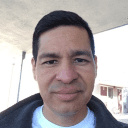

An October 2021 study by the American Academy of Arts and Sciences found that only 39 percent of Blacks 18- to 24-year-old reported receiving any arts education in school in 2012. Latinos fared slightly better at 43 percent compared with 53 percent for Whites.
The figures are woefully low for subjects that enrich people’s lives and have proven to improve language development and comprehension, as well as social interactions.
California education standards require arts and music taught in schools, but in reality few campuses – and even less in those with a large presence of historically underserved populations like Blacks and Latinos – offer students these options.
Former Los Angeles Unified School District Superintendent Beutner saw this first hand as he visited hundreds of schools during his tenure.
“It was top three every time: ‘we’d like more funding for arts’,” he remembers principals telling him over and over again.
“I’d see occasionally where it was present, but I’d see more often the absence of it,” he says of arts and music classes.
The reason: “The funding has not been there. It’s the first to be cut and has not been restored,” he notes.
Austin is trying to change that.
He’s leading the charge to make sure kids throughout the Golden State, especially those in lower income neighborhoods, get a chance to experience them, as he advocates for Proposition 28 that will be in the November ballot.
The measure is supported by a number of prominent artists, actors and entertainers and (in a rarity in this day and age) has no opposition.
If approved, it would annually allocate one percent from the state general fund for arts education in public schools, increasing spending by some $800 million to $1 billion, beginning in the school year 2023-2024. Schools must use the largest portion of the funding—80 percent—to hire teachers while the remaining 20 percent would go to supplies, such as music instruments, computers, etc. Each school will have control on how to spend the funding, according to their needs and desires. And schools with higher needs will get double the amount of funding.
“This would be the largest investment in arts and music education in the country’s history,” says Beutner, who notes that this will be done without a new tax, as the money is already there. “It will more than double the amount of people who are teaching arts in schools, bringing new visions, new ideas.”
“It will open a new era of creativity and opportunities for students in California that we haven’t seen in a long time,” he adds, particularly for Black and Latino students who often don’t have access to participate in courses that allow for “expression and creative thinking.”


An army of new teachers
“Arts” under this funding will encompass animation, design, computer coding, theater and an assortment of other areas.
Beutner says these classes—which would extend from Pre-K through 12th grade—would bring “a tidal wave of prepared young men and women who can enter great careers” down the line.
It will also open school doors to musicians and other professional artists who have shied away from campuses because of the uncertainty of employment.
“If you’re a musician, an artist or an animator you might not want to work in schools because your budget might get cut in a year,” Austin explains. With assured funding, that’s not the case anymore.
He estimates that over time, the funding could attract as many as 15,000 new teachers to schools and create a lasting changing for California students.
“My goal in doing this is real simple: make sure every child, in every grade has a chance to participate in arts and music,” he says. “In 10 years, those children who are just entering first grade this year will be graduating and it will be children who for the first time in the state of California will have had a chance to express themselves creatively, apply critical thinking skills while learning arts and music and I think we’re going to see a quantum leap in the aspiration of students and their capability to achieve those aspirations.”
Proposition 28: Sing, dance, play, the world of arts and music


Write a Reply or Comment
You should Sign In or Sign Up account to post comment.